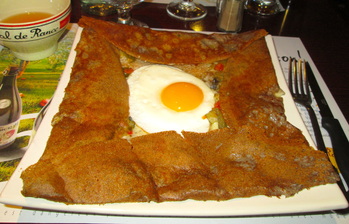 Galette filled with veggies and decorated with an egg. Galette filled with veggies and decorated with an egg.
Brittany is a Celtic region of France located on a ragged-edged peninsula that sticks out into the Atlantic Ocean. The mainstays of the rural region's economy are fishing, farming, and tourism. Long isolated from the rest of France, over the past two centuries Brittany has gradually absorbed some French customs, and most Bretons today speak French and wear modern Western clothing.
Still, traditional Breton customs remain strong. People still eat the traditional very thin pancakes called galettes and crêpes by themselves or stuffed with fillings. Traditionally, these simple breads contained only flour, water, and salt. Today people usually add butter, milk, and eggs to the batter.
These pancakes differ in two ways. First, galettes contain buckwheat flour, whereas crêpes contain wheat flour. Second, galettes usually have savory fillings, whereas crêpes usually have sweet fillings.
Buckwheat does not contain gluten and thus is safe for people with gluten allergies or intolerance to eat. (However, before ordering a galette in a restaurant, ask your waiter about its preparation. Sometimes white wheat flour is added to lighten the galette. Also, the chef may use the same equipment to make both galettes and crêpes.)
Galettes date back to the 1100s, when Crusaders coming home from fighting the Saracens introduced buckwheat to Brittany. Even today, sarrasin remains a French word for buckwheat. Crêpes first appeared in the early 20th century, when the price of white flour first dropped low enough that poor people could afford it.
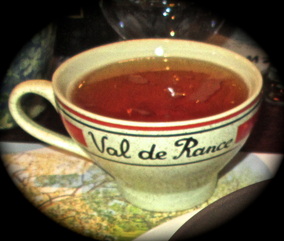 Sparkling cider from Brittany. Sparkling cider from Brittany. Traditionally, Bretons drink sweet (doux) or dry (sec) cider with their pancakes. This lightly alcoholic drink is sparkly.
Although cultural transmission has historically been from the dominant culture of France to the isolated culture of Brittany, Gallic France has adopted the Breton custom of eating galettes and crêpes. Crêperies (restaurants that serve these pancakes) can be found in places throughout France. Also, the French celebrate the Roman Catholic holiday Candlemas (2 February) by eating galettes and crêpes.
Many food cultures include flat pancakes made of ground grain and water. These include blinis (Russian), blintzes (Eastern Europe), sopes (Mexican), and dosas (Asian Indian).
—Shauna
More than a hundred stalls shelter under the hideous metal roof of le Marché des Capucins (the Capuchin Market) and spill out onto the sidewalks on two sides. This open-air market in Bordeaux first opened in 1749 in le Place des Capucins (named after the Capuchin order of monks). The market continues today near Place de la Victoire in a neighborhood of restaurants and ethnic stores.
The vendors encompass all you would find at an American farmer's market—and more: Butchers, bakers, caterers, florists, cheese merchants, fruit and vegetable sellers, wine merchants, olive sellers, oyster sellers, fishmongers, tripe sellers, and poultry dealers. Also, some stalls house tiny restaurants and sellers of cheap imported goods.
—Shauna
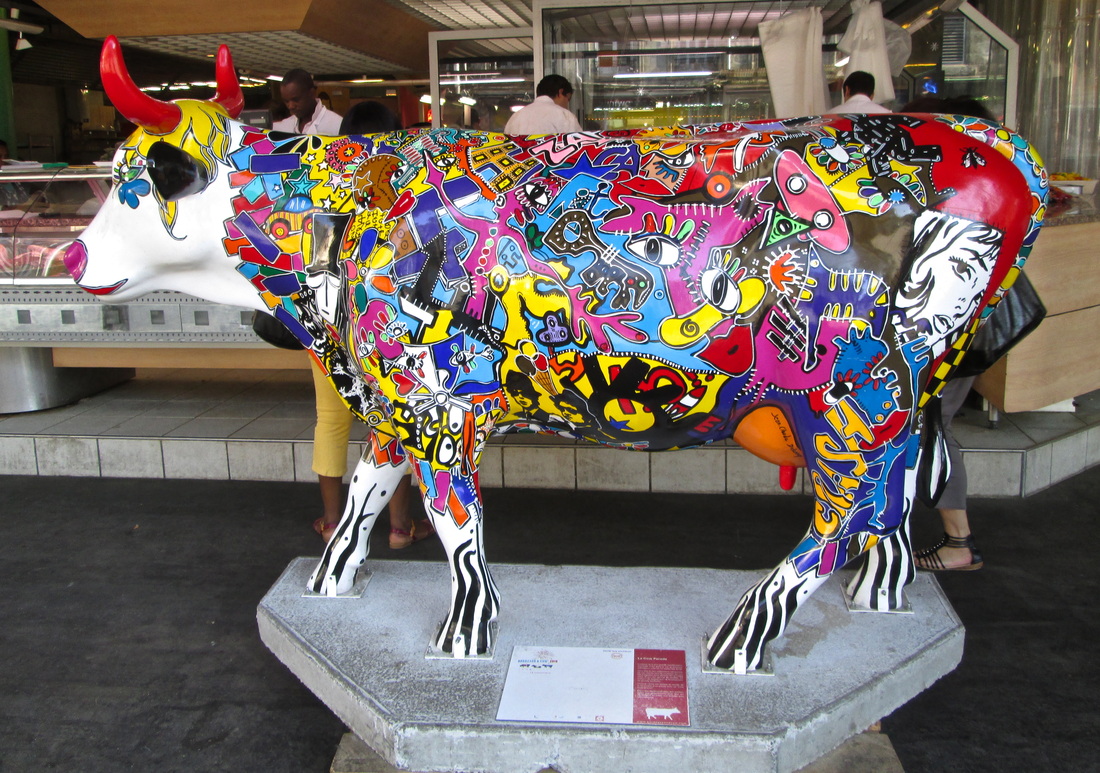
Painted fiberglass cow (in front of a butcher's stall) welcomes you to the market.
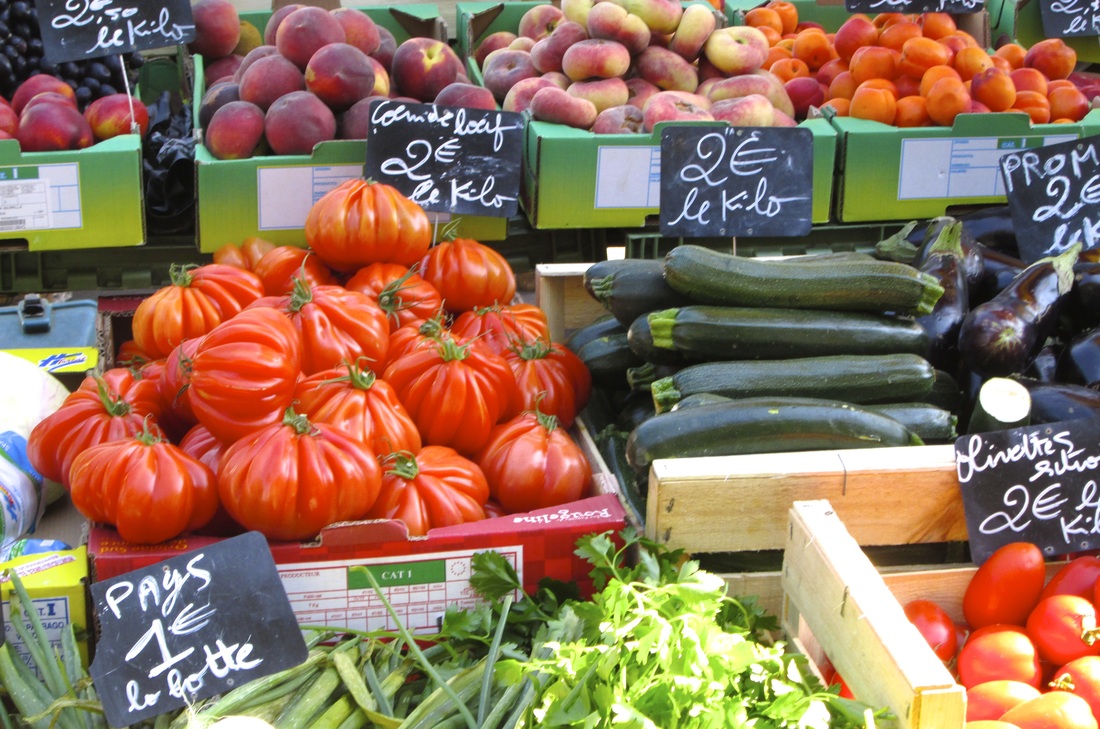
One of many colorful vegetable and fruit stands. Note the corrugated tomatoes. They have few seeds, so they may be a sauce tomato.
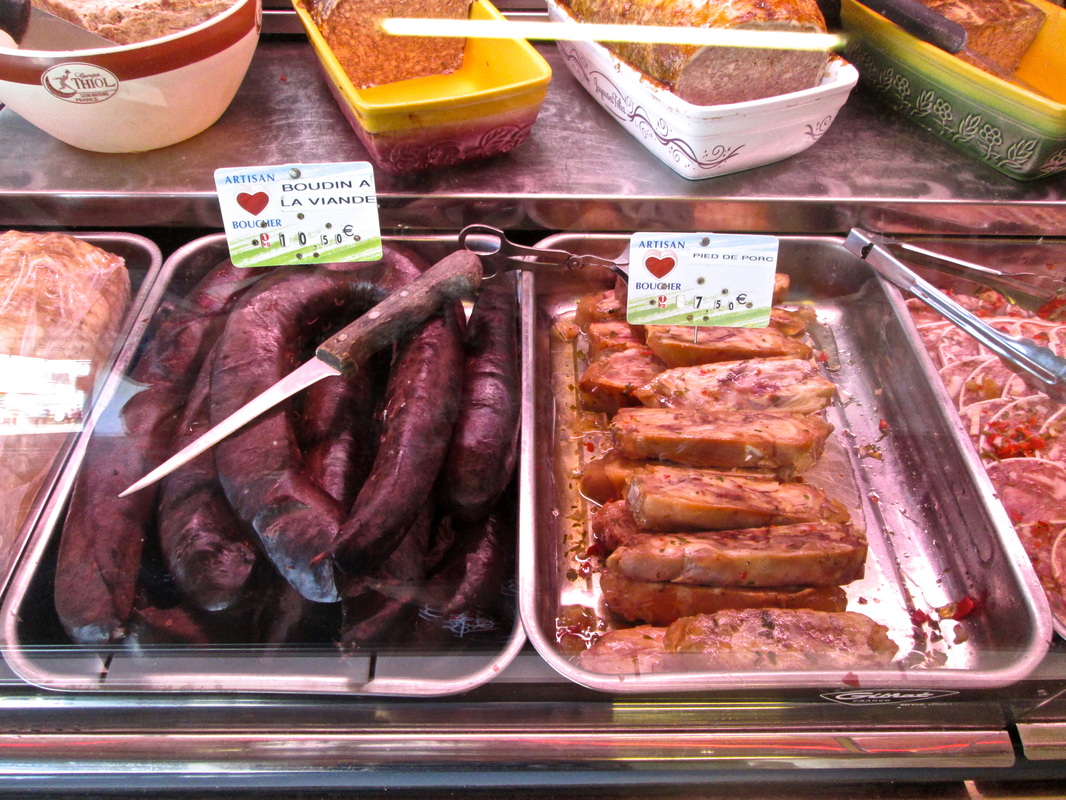
Sausages, cuts of pork, and patés. The foods of Bordeaux and the rest of Aquitaine are rich and heavy.
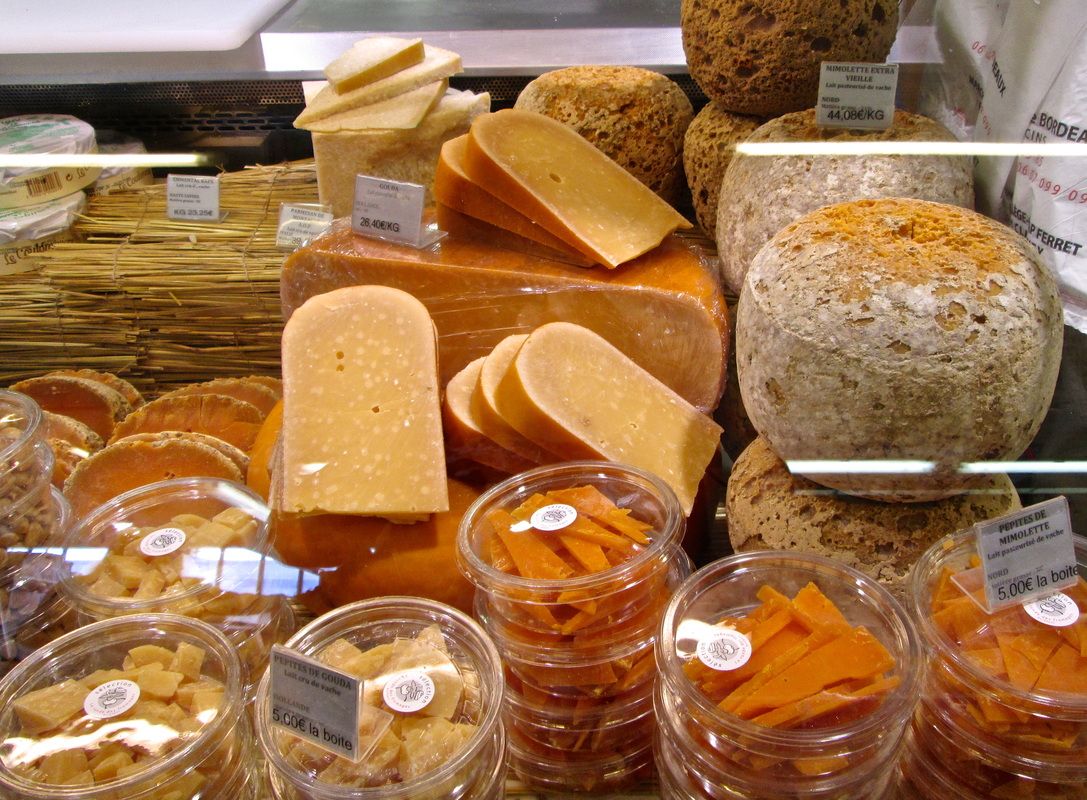
Cheeses. Almost all the cheeses at the market are locally made, and the signs tell you where, as well as what kind of cheese they are, what animal (cow, goat, or sheep) the milk came from, whether the milk was organic, and whether the milk had been pasteurized or not.
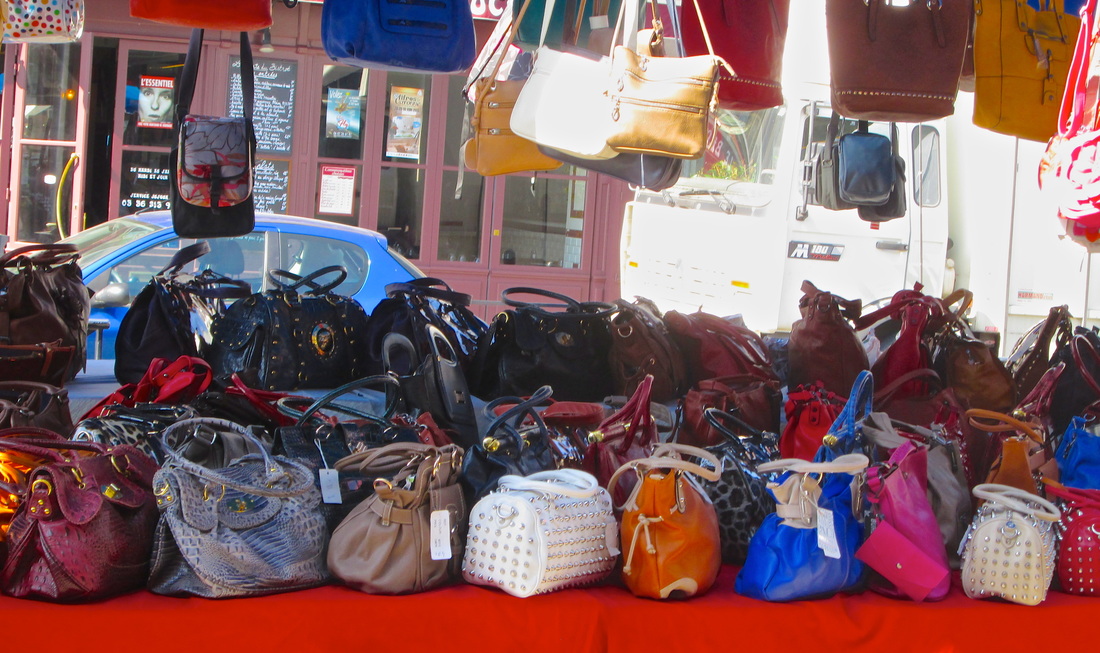
Purses, purses, and purses. And not the prices I expected: All of the purses visible here were at least 35 euros. They were cheap only in quality.
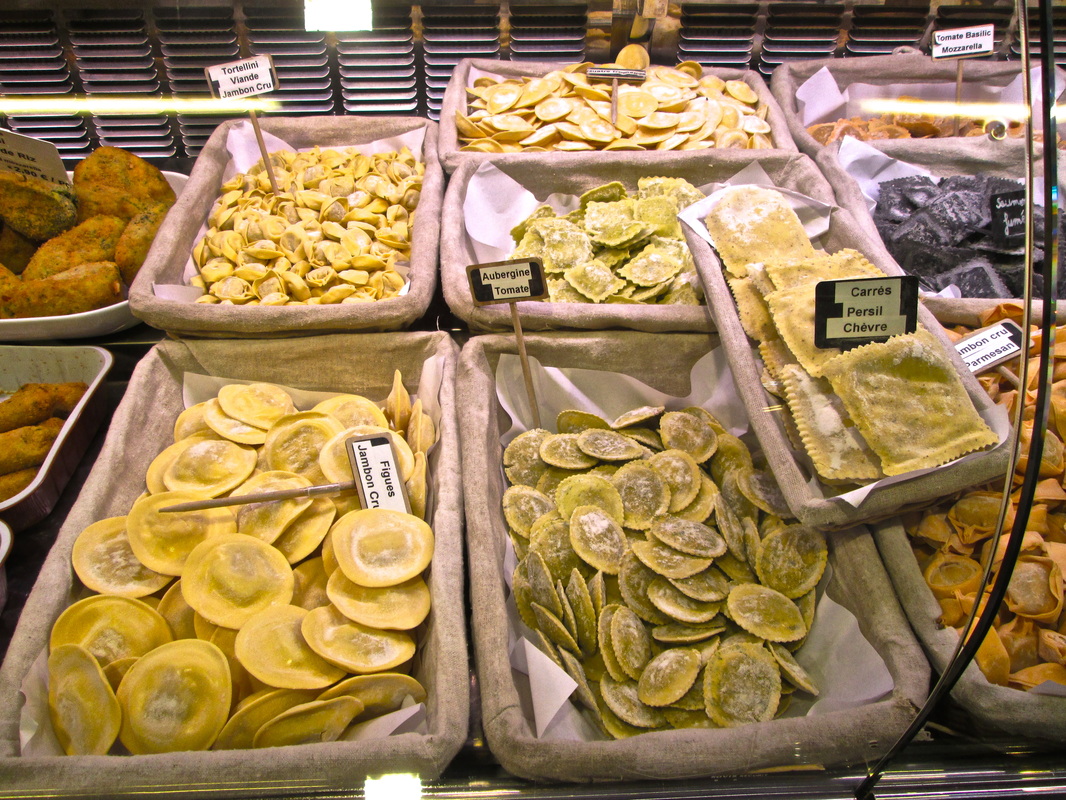
Italian foods, included several kinds of stuffed pasta.
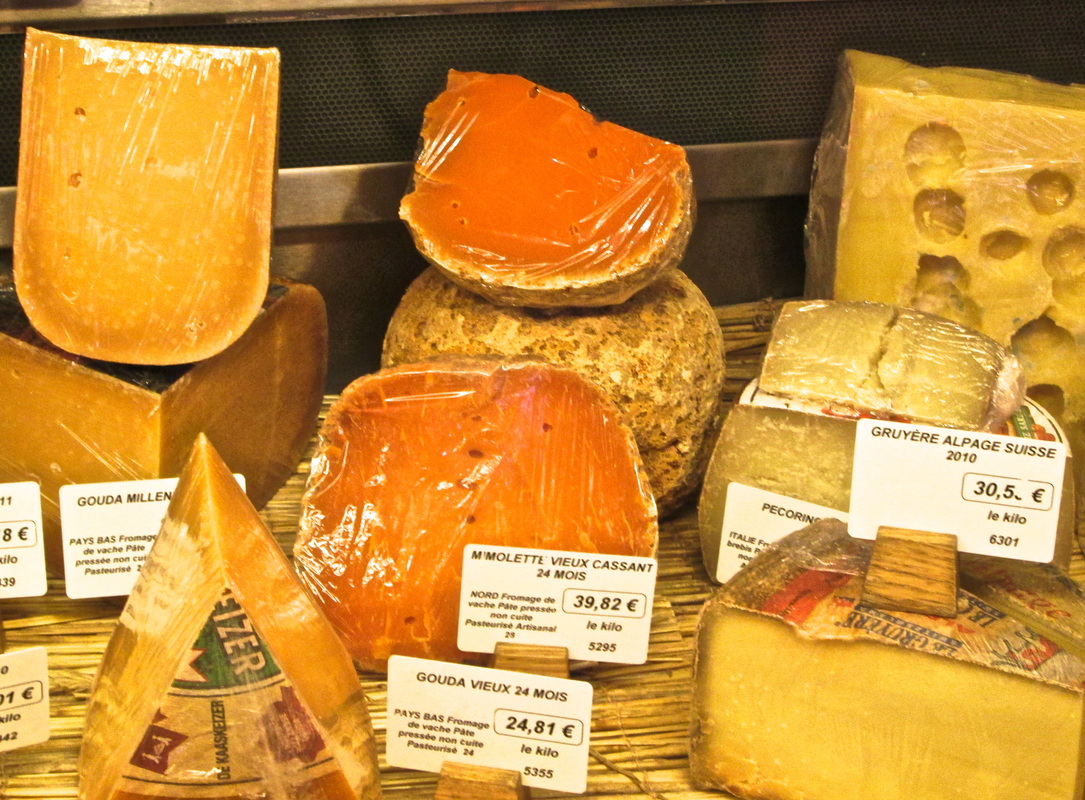
More kinds of cheeses.
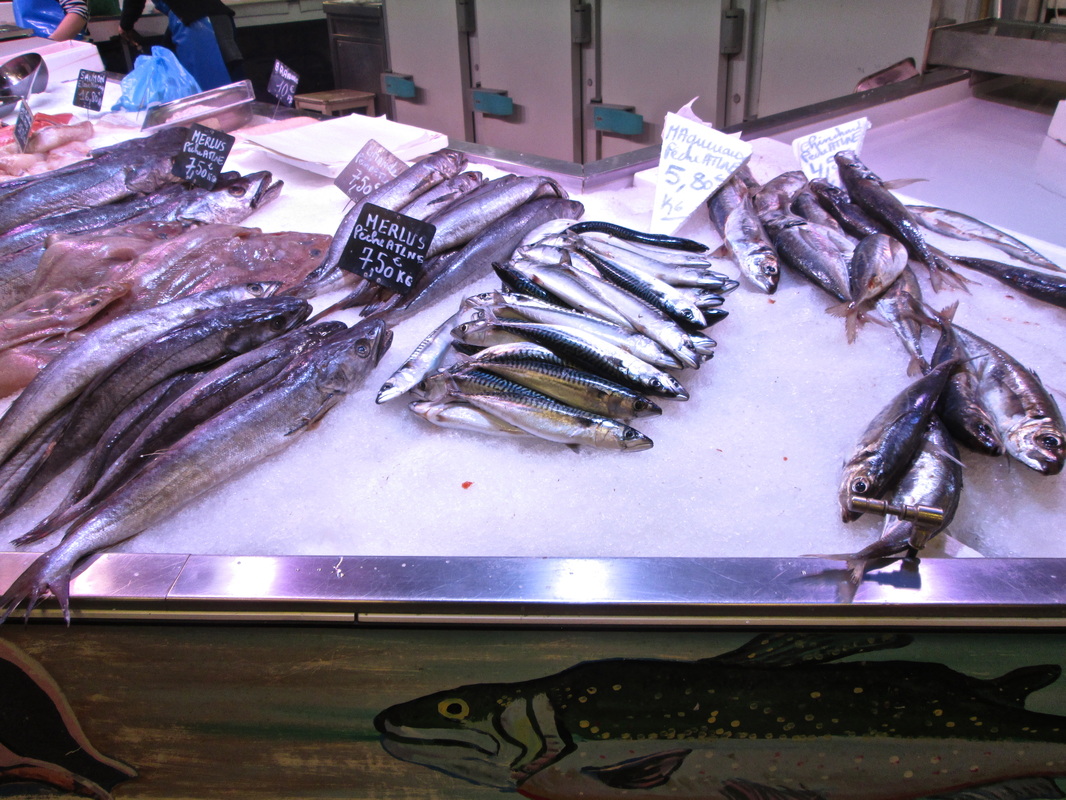
Fresh hake of various sizes. (Hake is a relative of cod.)
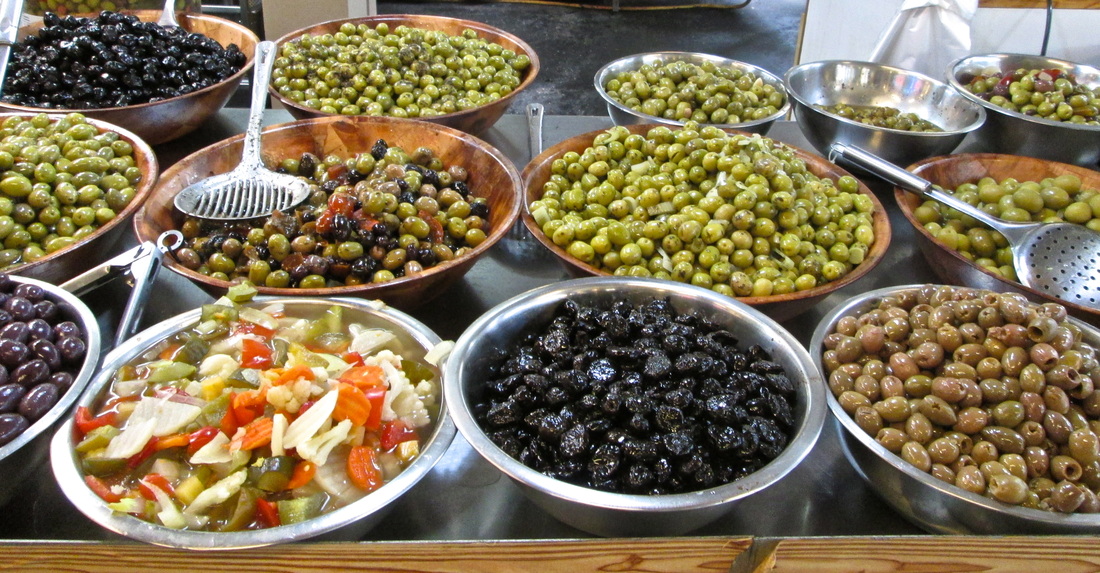
Olives and olive salads.
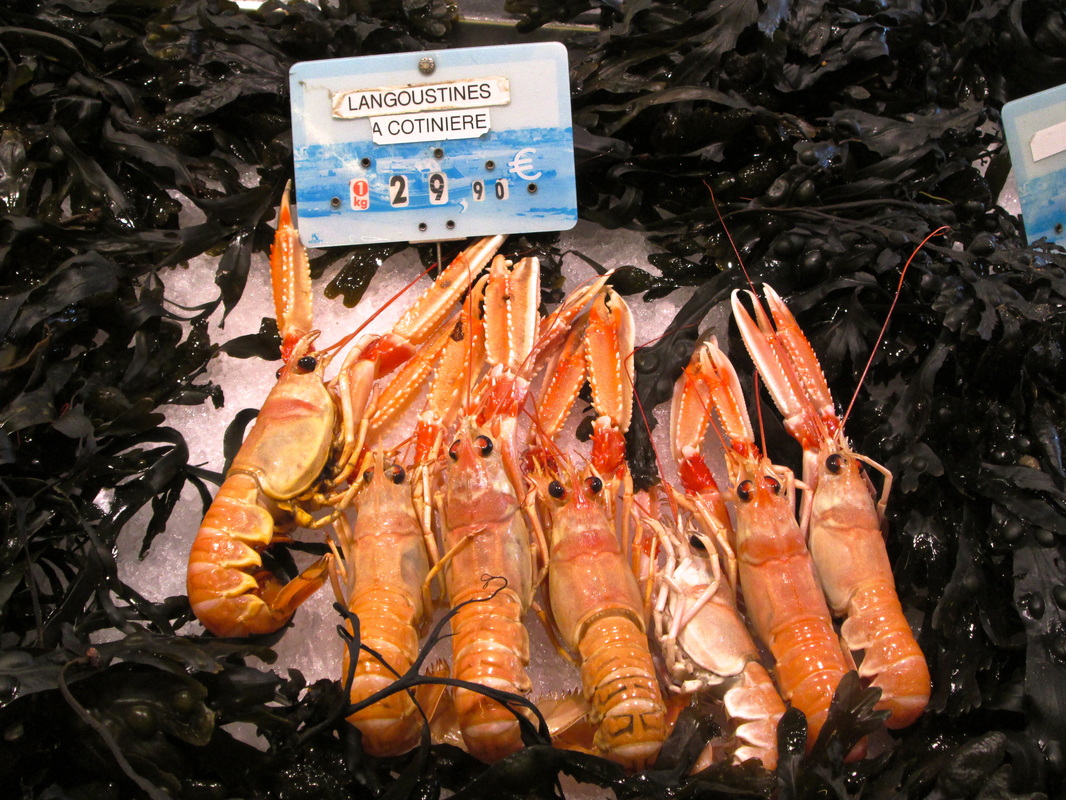
Small lobsters. Note that they are cheaper per kilogram than some of the cheeses shown earlier.
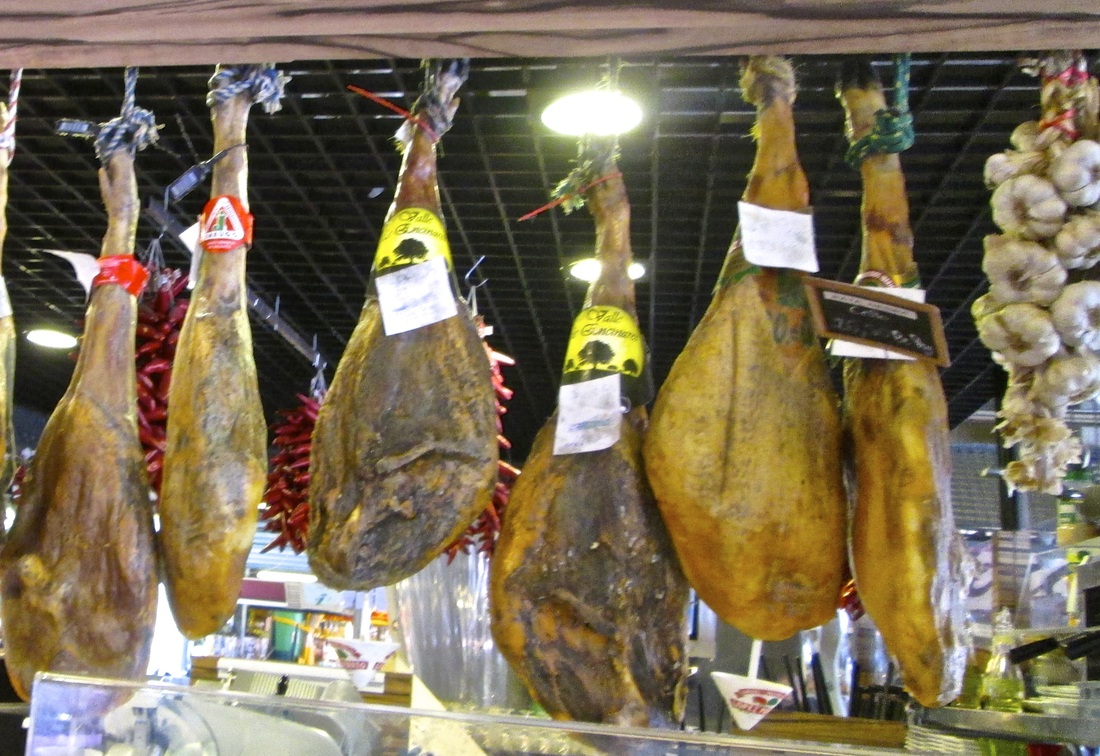
Animal legs? I did not approach closely enough to read the tags.
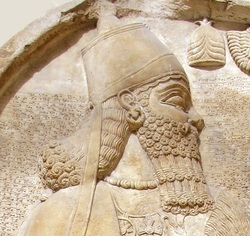 One of the most magnificent feasts in history celebrated the completion of the Assyrian palace in Kalhu (also called Nimrud, a city that once lay north of Baghdad) in 879 B.C.E. (before the Christian era). King Ashurnasirpal II wasted no time upon becoming king of Assyria (part of modern-day Iraq) in roughly 883 B.C.E. Thirsting for war and riches, he immediately invaded north, east, and west, conquering the people there. The Syrians soon rebelled against his savage rule. His response: Burn the small children to death, and mutilate the grown men. Some had their hands and feet cut off; others lost their ears, noses, and lips. Content that no one would revolt again, Ashurnasirpal II took his plunder home to Assyria and celebrated by forcing thousands of slaves to build him a luxurious new capital city at Kalhu. When the palace—built from imported luxury woods, limestone, and alabaster—was completed in 879 B.C.E., he held a feast for nearly 70,000 people from several countries that lasted 10 days. According to Ashurnasirpal's own words, the supplies he ordered for the banquet included: - 1,000 fattened head of cattle
- 1,000 calves
- 10,000 stable sheep
- 15,000 lambs
- 200 head of cattle (for offerings to the goddess Ishtar)
- 1,000 sihhu-sheep (for offerings to Ishtar)
- 1,000 spring lambs
- 500 gazelles
- 1,000 ducks
- 500 geese
- 500 kurku-geese (possibly cranes)
- 1,000 mesuku-birds (a bird of prey)
- 1,000 qaribu-birds (possibly crows)
- 10,000 doves
- 10,000 sukanunu-doves (possibly turtle doves)
- 10,000 other assorted small birds
- 10,000 assorted fish
- 10,000 jerboa
- 10,000 eggs
- 10,000 jars of beer
- 100 containers of fine mixed beer
- 10,000 imported skins of wine
- 1,000 wood crates of vegetables
- 300 containers of oil
- 100 pistachio cones
Unfortunately, Ashurnasirpal II failed to succumb to his high-fat, high-cholesterol, low-nutrient diet, either at his feast or later. He lived to crush his neighbors and create wall reliefs depicting these conquests for another 20 years. Ashurnasirpal II is remembered today for two reasons: his great feast and his great brutality. —Shauna ✥✥✥✥✥ Originally posted 2 June 2012 at http://shaunaroberts.blogspot.fr/2013/06/a-cruel-conquerers-grand-assyrian-feast.html.
|
 Galette filled with veggies and decorated with an egg.
Galette filled with veggies and decorated with an egg.  Sparkling cider from Brittany.
Sparkling cider from Brittany. 











 RSS Feed
RSS Feed